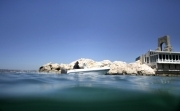L’importance de la biodiversité dans les équilibres biologiques
Les associations entre les espèces dans le monde vivant nous donne une magnifique illustration depuis les espèces qui ne peuvent plus vivre les unes sans les autres aux espèces qui vivent au dépend des autres.
La symbiose ou l’art de vivre ensemble ou le mutualisme, relation qui peut s’effectuer entre les végétaux, animaux voire entre les deux. On peut citer comme exemple les lichens : c’est une symbiose entre un champignon et une algue, le champignon apporte le substrat, l’humidité et les sels minéraux, alors que l’algue verte assure la synthèse des composés carbonés.
Le commensalisme ou l’art de vivre sans nuire, autre type de relation entre les espèces, des algues vertes poussent parfois sur le dos d’un animal marin et dans ce cas, elles servent de camouflage pour ce dernier (protection).
L’antibiose, certaines espèces produisent des substances qui empêchent d’autres de se développer, par exemple, sur terre, sous un loyer de Juglans nigra, rien ne se pousse, les feuilles de cette plante émettent une substance à action toxique « la juglone ».
Le parasitisme est une autre forme de corrélation entre espèces, un parasite est tout animal ou végétal qui vit au dépend de son hôte. On peut citer comme exemple les cuscutes qui ont des feuilles dépourvues de chlorophylle et parasitent totalement la luzerne et le trèfle.
Un autre exemple des relations entre espèces : la prédation, qui s’agit de la relation la plus fondamentale en écologie où l’un des partenaires est « mangé » par l’autre.
Enfin la compétition, il existe une relation négative entre les espèces incompatible biologiquement, l’une des espèces ralentit le développement d’autre, c’est le principe de l’exclusion compétitive. Pour les écologistes, la compétition est la cause d’évolution, il est donc vrai qu’au cours de l’évolution, l’apparition de nouvelles espèces dans la biosphère a déclenché une compétition interspécifique dont le résultat aura été la disposition de certaines espèces et l’installation d’autres.
En conclusion, nous pouvons discerner l’importance de toutes les espèces existantes sur notre planète, c’est une association permanente et indissociable, c’est la biodiversité qu’on essaye de la protéger pour être protégés nous même.
Références : Anonyme 2005, cours de biodiversité et amélioration des plantes, institut de biologie, université de Blida.







